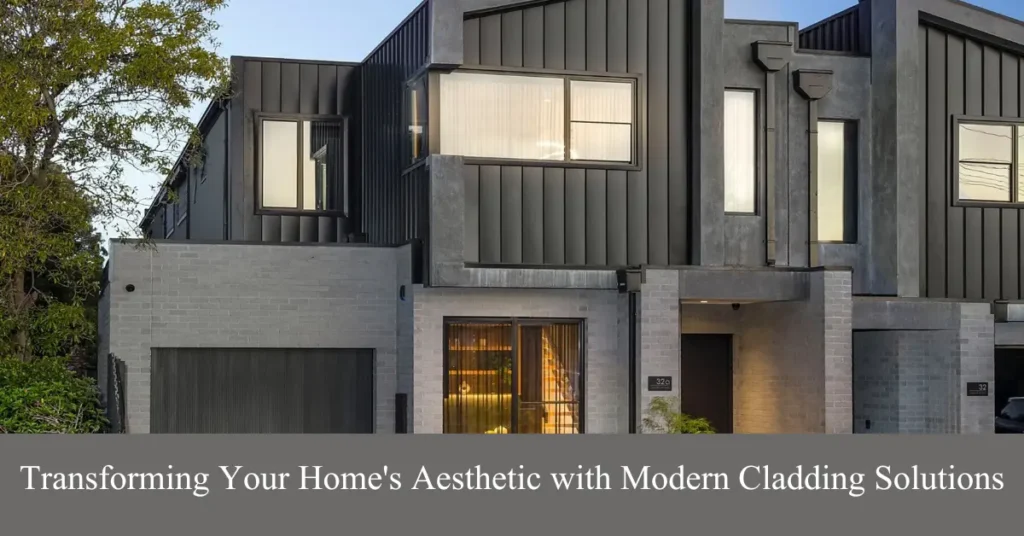In the realm of home renovation, a few attributes can redefine your space’s exterior as dramatically as modern cladding. If you’re considering giving your home a facelift or are simply intrigued by the prospect, you’ve dipped your toes into a world where design meets function in the most elegant ways.
But where do you start? In this article, we’ll discuss the basics of modern cladding and how it can transform your home’s aesthetic.
What is Modern Cladding?
Cladding refers to any material that covers or layers a building’s exterior, providing both protection and decoration. It can be made from a variety of materials such as wood, stone, metal, vinyl, and more recently, advanced composites.
Modern cladding, in particular, combines traditional methods with innovative techniques and materials to achieve a sleek and contemporary look. It often features clean lines, bold textures, and a wide range of colors to suit any architectural style.
Benefits of Modern Cladding
Many homeowners are turning to modern cladding for its numerous benefits, including:
Enhanced Aesthetic Appeal
Cladding allows for creative liberty in home design. Whether you opt for a sleek, modern look with metal panels, or the warm, earthy charm of timber, cladding can dramatically improve your home’s curb appeal and overall aesthetic.
Improved Insulation and Comfort
Many modern cladding materials offer excellent thermal performance, reducing energy costs, and minimizing your carbon footprint. They also act as a barrier to noise, helping create a tranquil environment within your home.
Durability and Protection
From rain to relentless sunshine, modern claddings are designed to withstand the elements. They protect your home’s structure, prolong its lifespan, and reduce the need for maintenance.
Types of Modern Cladding Materials: From Traditional to Innovative
When it comes to modern cladding solutions, the options are limitless. Some popular materials include:
Timber
Natural timber cladding has a timeless appeal and is a sustainable choice for environmentally conscious homeowners. It offers good insulation and can be treated to enhance its durability.
Metal
Metal cladding, often made from steel or aluminum, provides a sleek, contemporary finish. It’s also highly durable, fire-resistant, and available in a variety of colors and finishes.
Stone and Brick
While traditional, stone and brick cladding remain popular choices for their timeless aesthetic and sturdy protection. Modern variations now come in lightweight options, reducing stresses on the building’s structure.
Composite
Composite claddings combine the benefits of different materials to offer a versatile and durable option. For instance, wood-plastic composites provide the natural look of wood with the low maintenance of plastic.
Fiber Cement
Made from a mix of cement, sand, and cellulose fiber, fiber cement cladding is resilient, fire-resistant, and available in a range of textures that can mimic the look of other materials like wood and stone.
Considerations for Choosing the Right Cladding for Your Home
Now that you know the different types of modern cladding materials, it’s essential to consider a few factors before finalizing your choice:
Architectural Style
The cladding you choose should complement your home’s architectural style. For example, a sleek, modern home might benefit from metal or fiber cement cladding, while a rustic cottage would suit wooden cladding.
Local Regulations and Conditions
Be sure to check with local building codes as some areas have restrictions on the types of cladding you can use. Additionally, consider the climate in your area and choose a material that is best suited to the weather conditions.
Upkeep Preferences
Different materials require different levels of maintenance. Timber, for example, will need regular treatment, while metals are generally low maintenance. Consider how much time and effort you’re willing to invest in maintaining your cladding.
The Installation Process and Associated Costs
Before proceeding with any cladding project, it’s important to understand the installation process and potential costs involved.
Professional Installation
While some cladding materials can be installed as a DIY project, many homeowners opt for professional installation to ensure a high-quality finish and to comply with building regulations.
Budgeting for Cladding
The cost of cladding materials varies widely, and installation costs will depend on factors such as the complexity of the design, the height of the building, and the type of cladding material. It’s important to budget not just for the initial investment, but also for long-term maintenance costs. For example, aluminum distributors may offer a more affordable initial cost, but timber cladding may require more frequent maintenance and replacements over time.
Siding with Sustainability
Investing in sustainable cladding can add to the upfront cost but may result in long-term savings on energy bills and maintenance. Be sure to consider the lifecycle costs of different cladding options.
Long-Term Maintenance and Durability of Modern Cladding
One of the key benefits of modern cladding is its durability, but it’s still important to properly maintain and care for your cladding over time. Here are a few tips:
Regular Inspections
Regularly inspect your cladding for any signs of damage, such as cracks or discoloration. Catching issues early can prevent further damage and costly repairs.
Cleaning and Maintenance
Each type of cladding material will have specific cleaning and maintenance instructions. Be sure to follow them regularly to keep your cladding looking its best.
Replacements and Repairs
If a section of your cladding becomes damaged, it’s important to address it promptly. This may involve replacing the damaged area or making repairs as needed.
Conclusion
Modern cladding offers a wide range of benefits, from enhancing the appearance of your home to providing insulation and protection. Whether you choose traditional materials or opt for more innovative solutions, it’s important to consider factors such as architectural style, local regulations, and maintenance when selecting the right cladding for your home. With proper installation and maintenance, modern cladding can add both value and functionality to your home for years to come.
